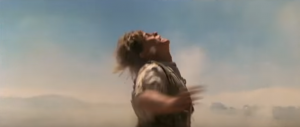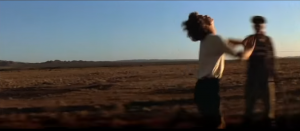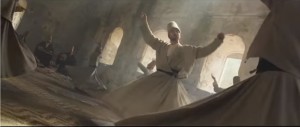Structure, Skirt and Wheel
Reoccurring Imagery in Film
Near the start of this New Year I turn again to films whose peninsular lands I have wandered. From Peter Weir’s Gallipoli, that galvanized my interest in film-making, to Russell Crowe’s The Water Diviner whose pilgrim father is a character to whom I relate. In Weir’s Gallipoli it is the runner, within Mark Lee’s Archy, at the distance finish line and at life’s ending…the similar film sequences that remain within my person…evoking the cycle of life from triumph to disaster…a life won…a life lost.

From Peter Weir’s Gallipoli (1981). Archy Hamilton aka Lascelles loss at Gallipoli…the reoccurring image.
Similarly there are many themes to choose from in Crowe’s The Water Diviner. Perhaps the reoccurring touch of a caring hand, the symbolism of wells and water…discovery or escape as birth and rebirth? There are magic carpets and Arabian Knights, scenes of earth, wind and sun and so too homage to Crowe’s Gladiator as rider along the road or kneeling with earth in hand.
We have seen similar things in our own realities – images of memory that we carry for our cycle on this earth. Perhaps it is as witnesses to the elder who touches drum to earth before the rhythm of the heart begins to beat or to the Sensei whose belt touches cheek and temple before the belt is tied? These observations remain within us for some purpose…they can be effective teachings…but how to place them in story…where to use them…as reoccurring imagery or as symbols in our presentations. They are here for a purpose…finding their place can be significant as the journey they explore rather than their ultimate definition.
Today I turn to whirling motion in The Water Diviner...the cyclical energy that appears and reappears throughout the film as structure, skirt and wheel. This reoccurring theme places itself as backdrop and main sequence to Russell Crowe’s Joshua Connor as father and Ryan Corr’s Arthur Connor as son. Windmill, whirling Dervish and locomotive…I see these motions as the cycle of Crowe’s story…symbolic kinetics that subliminally move the Connor story along. Background or passing actions, symbols perhaps missed when we become mesmerized with the front of house large screen.
In particular I use these, my meditations, to critique film reviews. As historian I applaud historical accuracy but I also applaud the film-maker’s art. Perhaps history has not recorded an Australian Gallipoli soldier swirling with the Sufis but look for meaning within the whirling Dervish scenes of Arthur Connor and relate theme to the torment of his Gallipoli. Perhaps Arthur dances to be closer to God…to be closer to the mystical rather than the reality he has faced, setting himself apart from earthly things.
My one only hope for Ryan Corr’s character…that Arthur Connor continues to dance upon his return home.
A secret turning in us makes the universe turn.
Head unaware of feet, and feet of head. Neither cares.
They keep turning.
(Jalāl ad-Dīn Muhammad Rūmī 1207 – 1273).
Video: Step Inside the Mind of a Whirling Dervish.
TRT (Turkish Radio and Television Corporation)



Comments